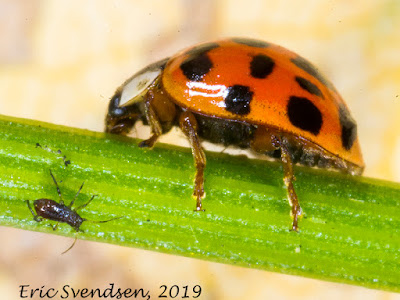Clodius parnassian butterfly
 |
| The clodius parnassian butterfly |
One of my
favourite things to do is to stroll about in some natural area with a camera
and see what I can discover. Admittedly,
it lacks the rigorous nature of cardio activities which my body would benefit
from. It also has the disadvantage of
being a boring spectator sport for anyone who may accompany me on such a
quest. This is why I usually end up doing
it alone. The great thing about it all
though is that I am not alone; all about me are marvelous examples of what
wonders exist.
Yesterday on
my walk I came across a butterfly I have never seen before. It had some remarkable features on it unique
to my experience. The wings were mostly
white, unusual for native species, with gray blotchy edges. It also had a yellow head and black antennae. It was rather large, although not as big as a
swallowtail. It wasn’t until later that
I identified it as a clodius parnassian.
Its scientific name is Parnassian clodius.
I keep quite
a good collection of field identification guides in my RV when I travel for
just this very reason. I must have 5 or
6 good books on butterfly and moth identification. They rarely let me down, especially when I am
in the region they specialize in. It
took ten minutes of searching and cross referencing before I felt confident in
my verdict.
The
interesting thing about Parnassian butterflies is that the male, once
copulation has been achieved, prevents other males from repeating his success
by attaching a sphragis to his mate. It
sounds Scottish, doesn’t it? The
sphragis does, however, allow the passage of eggs. The male can go about his business looking
for more reproductive opportunities while the female is left to bear his
young.
The
caterpillars feed on wild bleeding hearts; I see plenty of these plants on my
travels but have yet to identify any larvae.
The eggs are laid in the fall near a food source so that, in the spring,
the young can feed. Most caterpillars
are somewhat picky about their host plant.
The wrong plant species will guarantee death. The advantage of this though is that we can
use specific kinds of caterpillars to control particular weeds. The downside is that foreign invasive species
can wipe out plants that have no resistance to their enormous appetites.



Comments
Post a Comment